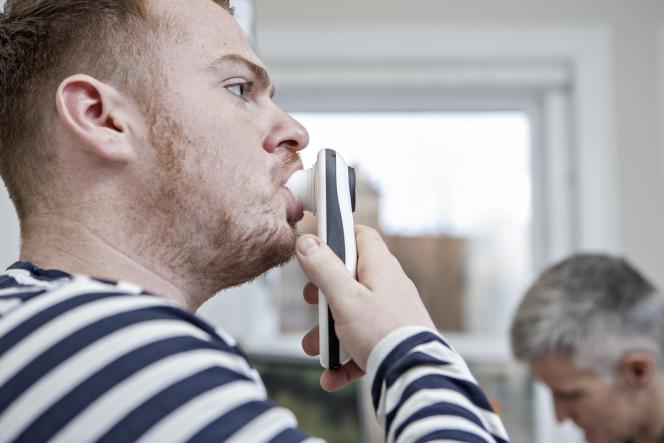A little-known disease, COPD, called chronic obstructive pulmonary disease, will become the third leading cause of death in the world by 2030, the World Health Organization (WHO) recently warned. In France, 18,000 people die each year from this disease, which has also caused between 130,000 and 160,000 hospitalizations.
A session of the Academy of Pharmacy alerted, Wednesday, June 1, to “this chronic, fatal disease, too largely underdiagnosed”. Thus, 5 to 10% of people over 45 suffer from it, i.e. 2.5 to 3 million French people. Several experts had already alerted in a column published in our columns on March 14, 2018, asking for “the declaration of a state of health emergency”. Patient associations and learned societies also published a white paper in 2017 to alert the authorities.
COPD is due to smoking in 80% of cases, air pollution is also an early determinant of the disease, such as occupational exposures and passive exposure to cigarette smoke. Other factors, such as genetic factors, also explain its progression.
Vicious circle
“The disease is often under-diagnosed, the pathology evolving all the more if smoking continues”, explains Claire Andrejak, pulmonologist at the Amiens University Hospital and general secretary of the scientific council of the French-speaking Pneumology Society (SPLF). . The lungs are damaged. For emphysema (which is part of COPD), some professionals paint the picture of a healthy lung being like cheese then turning into Swiss cheese, with “holes” appearing when the disease started.
It is often a vicious circle, the patient finds it increasingly difficult to breathe on exertion (dyspnea), which encourages him to move less and less. Combined with other symptoms (chronic cough and/or fatigue), this is a source of disability in daily life. Later, exacerbations can lead the patient to intensive care. “The collective impact is enormous,” said Nicolas Roche, head of the pulmonology department at Cochin Hospital (APHP).
Faced with these often ignored symptoms, it is therefore imperative to consult and assess the respiratory capacity (spirometry). However, only 21.3% of people identified at risk of COPD benefit from such screening, according to the High Authority for Health (HAS).
“We are in the process of better characterizing the patients according to their clinical characteristics, because there is not one but several COPD, whose symptoms differ”, abounds Claire Andrejak. Several treatments can improve the symptoms, first stopping smoking, which is essential to prevent the progression of the disease. Then there are inhaled treatments but also respiratory rehabilitation, allowing the patient to be less out of breath on exertion. It is essential to adapt to each patient, especially in the bronchodilator delivery system. Physical activity also plays an important role. “More specific treatments may be offered depending on the patient’s lesions. Finally, treatments to prevent exacerbations are proposed. The objective is to avoid reaching respiratory failure, a stage where long-term oxygen therapy may be necessary, ”explains Claire Andrejak.














